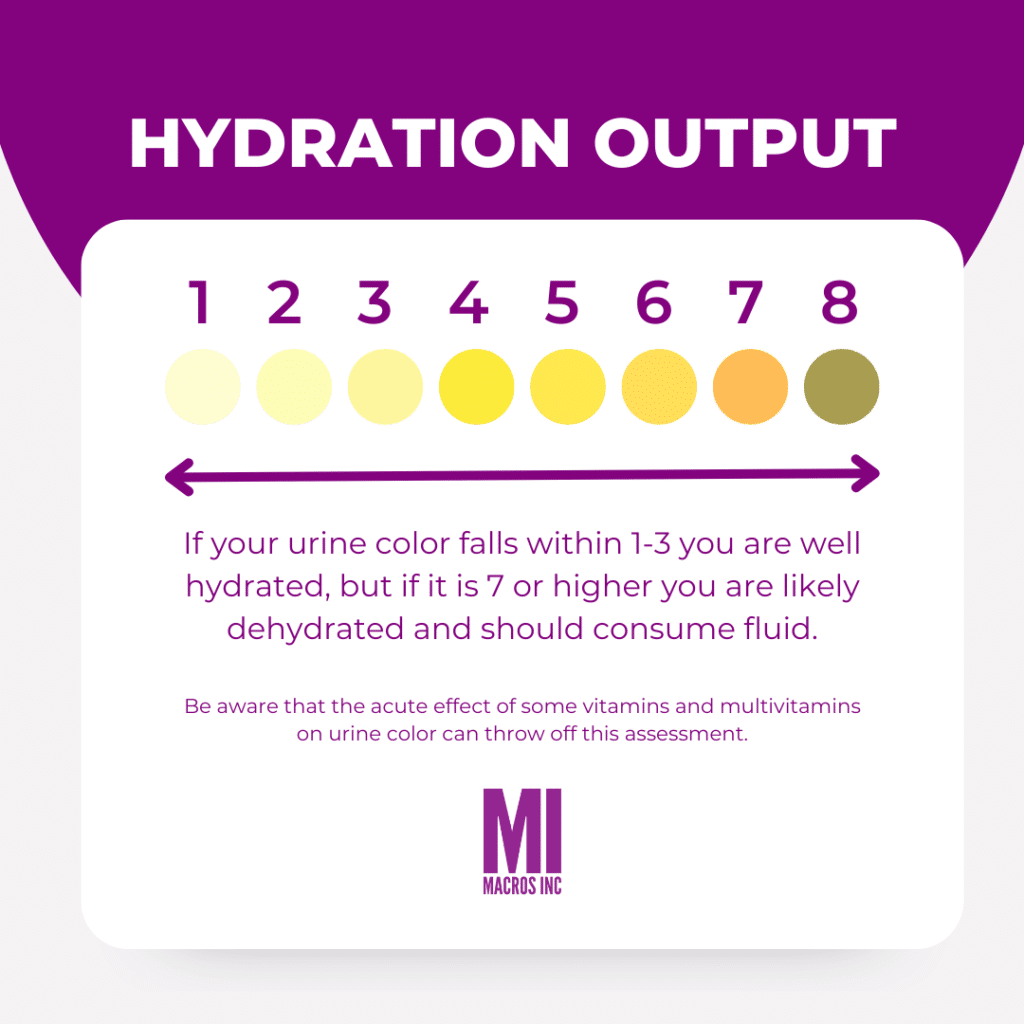Introduction
Water comes in, water goes out. That is the extent to which most of us really think about hydration. Turns out, there is a lot more do it than that. This NutriWiki covers the ins-and-outs of hydration.
Summary
- For most people, drinking to thirst is sufficient for maintaining hydration during a workout.
- Exercising for extended periods of time, or in hot environments, should be more closely monitored. Environment, duration of training, and type of training can increase hydration needs.
- All non-alcoholic sources count towards daily fluid intake, and are equally effective at rehydration. Intense or prolonged exercise may benefit from oral rehydration solutions or milk.
Discussion
The following information and recommendations are adapted from the National Institute of Medicine1, unless cited otherwise.
Drinking to Thirst
Drinking to thirst is the simplest method to stay hydrated. Thirst is triggered by fluid shifts, electrolyte imbalances, and the levels of certain signal proteins in the body 2. By the time the average person feels thirsty, they are already dehydrated by ~2%. This level of dehydration generally has little impact on health or physical performance.
However, in studies comparing humans and animals drinking ad libitum, humans tend to under-replace their fluid needs over the short term. This under-replacement, coupled with the delay between thirst response and dehydration status, can become a bigger problem over time. Therefore, it may be best to evenly space fluid intake throughout the day, with a larger emphasis around and during training.
Adequate Intake
The following intakes are considered adequate intake (AI) for hydration:
- Men: 3.7 liters/day, of which 3 liters should be from fluid.
- Women: 2.7 liters/day, of which 2.2 liters should be from fluid.
Note that each individual’s fluid requirements will differ. These values are population averages, and are further affected by factors such as activity and environment.
People who live or exercise in warm environments need more fluid. 4.9L and 2.3L of fluid lost via sweat have been documented in desert and tropical environments, respectively.
Consuming more fluid than is necessary is usually not problematic. The upper tolerable limit for water has not been set; however, toxicity has been reported in individuals exceeding intake of 1.0L/hour.
Monitoring Output
Another way to gauge hydration status is by monitoring your urine output. Output of 100mL/hour typically equates to a well hydrated person. Output of 300-600mL/hour can indicate excess fluid (hyperhydration), but does not necessarily indicate hyponutremia. Output of less than 30mL/hour indicates dehydration.
Since monitoring actual output isn’t always practical, watching the color of your urine can be used instead (Figure 1)3. Note that excess vitamins and minerals can alter the color of urine output, and evaluation in a toilet bowl can also be inaccurate due to dilution of the urine.

Beverages and Rehydration
Most fluids contribute towards daily fluid intake and rehydration, albeit with different levels of effectiveness4. The notable exception is alcohol, which produces a diuretic effect in the body5. For most individuals, any combination of beverages throughout the day should be sufficient for hydration needs. For extensive or intense bouts of exercise, oral rehydration solutions or milk4 may be particularly useful.
References
- Institute of Medicine. 2005. Dietary Reference Intakes for Water, Potassium, Sodium, Chloride, and Sulfate. Washington, DC: The National Academies Press. https://doi.org/10.17226/10925.
- Bichet DG. Vasopressin and the Regulation of Thirst. Ann Nutr Metab. 2018;72 Suppl 2:3-7. doi: 10.1159/000488233. Epub 2018 Jun 20.
- U.S. Army Public Health Command. Heat: Are You Hydrated? Take The Urine Color Test Poster. 2014 Dec 15.
- Maughan RJ, Watson P, Cordery PA, Walsh NP, Oliver SJ, Dolci A, Rodriguez-Sanchez N, Galloway SD. A randomized trial to assess the potential of different beverages to affect hydration status: development of a beverage hydration index. Am J Clin Nutr. 2016 Mar;103(3):717-23. doi: 10.3945/ajcn.115.114769. Epub 2015 Dec 23.
- Roberts KE. Mechanism of Dehydration Following Alcohol Ingestion. Arch Intern Med. 1963;112(2):154–157. doi:https://doi.org/10.1001/archinte.1963.03860020052002
